Hôpital du village floral de médecine orientale de Gyeongju (꽃마을 경주한방병원)
.0M 2020-05-15
924, Poseok-ro, Gyeongju-si, Gyeongsangbuk-do
+82-54-775-6600
L’hopital
kkotmaeul de médicine orientale de Gyeongju est une destination phare des
touristes venues en Corée pour raison médicale. Ce complex abrite des équipements
médicaux modernes et est complètement composé de hanok qui se confondent
parfaitement avec la ville touristique de Gyeongju.
Le gouvernement a décidé de faire de l’hopital kkotmaeul le fer-de-lance de son
projet « Health Tour to Korea » et tout son personnel met tout en oeuvre
pour le développement de celui-ci.
KELIMGUNG [Korea Quality] / 계림궁 [한국관광 품질인증]
122.9M 2023-04-13
932, Poseok-ro, Gyeongju-si, Gyeongsangbuk-do
+82-10-2705-8121
According to a Korean myth, Gyerim Forest in Banwolseong Fortress, Gyeongju is the birthplace of Silla Kingdom founder Kim Alji (of Gyeongju Kim’s Clan) about two thousand years ago. Gyerimgung Hanok Pension is located 2 kilometers from Banwolseong Fortress and is named after the forest. Inside the gate are guestrooms named “Yoseok Room” with a large window in the detached building, “Sirim Room” and “Alji Room” in the main building, and “Asadal Room” and “Asanyeo Room” right next to it. The guesthouse has a shared kitchen and two “wondumak” (a Korean lookout hut on stilts usually in a melon field for guests to use). Barbecue facilities are also available upon reservation. The guesthouse offers a number of fun traditional programs including “Starting a Fire for Traditional Korean Iron Pot,” “Neolttwigi,” and “Yunnori.” Gyeongju Oreung in the vicinity of the guesthouse is a great place to take a walk. Nearby popular tourist destinations include Banwolseong Fortress, Cheomseongdae Observatory, and Daereungwon Tomb Complex. The guesthouse can be a great choice for those looking for a quiet place to stay overnight because it's situated in a residential area slightly off the main tourist zone.
Gyeongju Oreung (경주 오릉)
237.7M 2020-05-12
38-9, Geumseong-ro, Gyeongju-si, Gyeongsangbuk-do
+82-54-779-6100
Le monument historique n°172, dénommé
'Oreung' renvoit aux 5 tombes royales. Il s'agit des tombes des quatres premiers
rois de Silla qui portent le nom de "Bak" et de la femme de Bakhyeokgeose,
le premier roi de Silla. A l'est d'Oreung se trouve "Sungdeokjeon"
et derrière ce monument se trouve "Aryeongjeong".
Gyeongjuhanok 1st [Korea Quality] / 경주 한옥 1번가 [한국관광 품질인증]
337.3M 2021-04-01
20, Cheonwon 1-gil, Gyeongju-si, Gyeongsangbuk-do
010-9505-5367
As a new hanok guesthouse, Gyeongju Hanok 1st is located at the entrance to Cheonwon Village, Gyeongju, Gyeongsangbuk-do. It has various modern amenities while preserving the features of a traditional Korean house. The guesthouse is kept cool in summer and warm in winter, so guests can experience the traditional Korean house. It has various rooms in different sizes that can accommodate 3 - 8 people. There is a stand-alone guesthouse furnished with kitchen and bathroom as well. All other rooms also have a bathroom inside, but the kitchen must be shared among the guests. There are no beds in the room as is typical of a traditional Korean house, but there are high-quality sheets and blankets for the comfort of the guests. The guesthouse has a large front yard with a miniature traditional Korean house with dolls adorned in traditional clothes, not to mention other traditional artifacts. Popular tourist destinations within the vicinity of the guesthouse include Anapji Pond, Cheomseongdae, and Gyeongju National Museum.
Wadamjung [Korea Quality] / 와담정 [한국관광 품질인증]
339.5M 2023-04-13
18, Cheonwon 1-gil, Gyeongju-si, Gyeongsangbuk-do
+82-54-772-5400 / +82-10-6571-3412
Wadamjung in Cheonwon Village, Gyeongju is a modern traditional Korean guesthouse built in May 2017, with both the features of a traditional Korean house and modern facilities such as air conditioner and bathroom. It has a total of nine guestrooms that can accommodate three to six people, and there is a kitchen that can be shared among the guests. A large group can book a stand-alone guestroom that can accommodate up to 12 people, inclusive of a kitchen. There are various traditional artifacts and items with which to play a traditional game in the large yard, such as Jegi (Korean shuttlecock game) and Tuho (Arrow-throwing). In addition, there are a number of tourist destinations such as Cheomseongdae in Wolseong District, with lots of historical sites in Gyeongju as well as Gyeongju National Museum.
Gyeongju Oreung Hanok [Korea Quality] / 경주오릉한옥 [한국관광 품질인증/Korea Quality]
416.3M 2023-04-13
12-17, Gukdang 2-gil, Gyeongju-si, Gyeongsangbuk-do
This hanok (traditional Korean house) guesthouse is located right across from the Five Royal Tombs in Gyeongju. Because there are no obstructions on the way, the guesthouse enjoys a remarkable view of the ancient city. Located about 2.5 km from Gyeongju Intercity Bus Termina and about 2 km from Gyeongju Historic Areas, this guesthouse has a dignified yet comfortable atmosphere.
It is run by a mother-and-daughter team, whose attention to detail and care can be felt tangibly in the comfortably furnished rooms: well-maintained lawn and trees, double doors that help to prevent drafts and noises, and clean white bedding appreciated by many visitors. Rooms with ondol (under-the-floor heating system) are ideal for two. From walls covered by traditional Korean paper to clean and comfortable bedding, the room exudes comfort. A raised floor space in front of the room is a great place to see the scenery and a great place for photography.
Another strength of Gyeongju Oreung Hanok guesthouse is its accessibility. Hwangnidan-gil Street, a bustling street full of restaurants and cafes, is only a 15-min walk away, while Gyeongju’s famous sights such as Cheomseongdae Observatory, Daereungwon Ancient Tomb Complex, Donggung Palace and Wolji Pond, and Gyeongju National Museum are only a 10-min drive away.
Village Gyochon de Gyeongju (경주 교촌마을)
788.7M 2020-10-06
39-2, Gyochon-gil, Gyeongju-si, Gyeongsangbuk-do
+82-54-760-7880
Le village Gyochon de Gyeongju est un village traditionnel constitué de hanok devenu site touristique proposant diverses activités pratiques pour les visiteurs. Le village abrite notamment la maison Gyeongju Choi Ssi, classée comme 27ème trésor du patrimoine folklorique en Corée ainsi qu'une fabrique de l'alcool Gyeongju Gyodong Beopju classé trésor immatériel num. 86-3.
Festival Silla Sori, Emille (신라소리축제 에밀레전)
868.0M 2019-11-11
Gyeongsangbuk-do, Gyeongju-si, Chamseong-ro 147
1899-1098
Le festival Silla Sori traite de l’histoire de la cloche divine du roi Seongdeok, inauguré durant la période Silla en Corée. Le festival a lieu à Gyeongju et traite donc d’un patrimoine culturel vieux de plus de 1000 ans. Le festival est organisé par la chaîne BBS (chaîne bouddhiste en Corée), et est sponsorisé par la ville de Gyeongju, la région Gyeongsangbuk-do, par le temple Bulguksa et par le ministère de la culture et des sports en Corée. Le festival occupe un vaste champ d’herbe autour de l’observatoire Cheomseogdae. Vous pourrez ainsi apprécier la culture Silla de plus près durant la période du festival.
Pont Woljeonggyo (월정교)
868.0M 2024-10-28
274, Gyo-dong, Gyeongju-si, Gyeongsangbuk-do
Ce pont a été construit à Gyo-dong dans la ville de Gyeongju-si (région Gyeongsangbuk-do) pendant la période du royaume unifié de Silla. Il a été endommagé sous la dynastie Joseon avant d'être restauré en avril 2018 en tant que plus grand pont en bois de Corée.
Selon le livre Samguksagi, il fut bâti durant la 19e année du règne du roi Gyeongdeokwang (760) du royaume unifié de Silla afin de relier Wolseong et Namsan à Gyeongju.
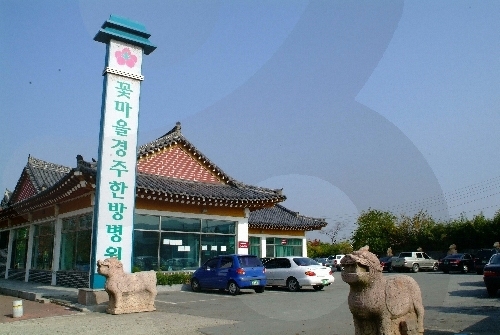
![KELIMGUNG [Korea Quality] / 계림궁 [한국관광 품질인증]](http://tong.visitkorea.or.kr/cms/resource/67/2543967_image2_1.jpg)
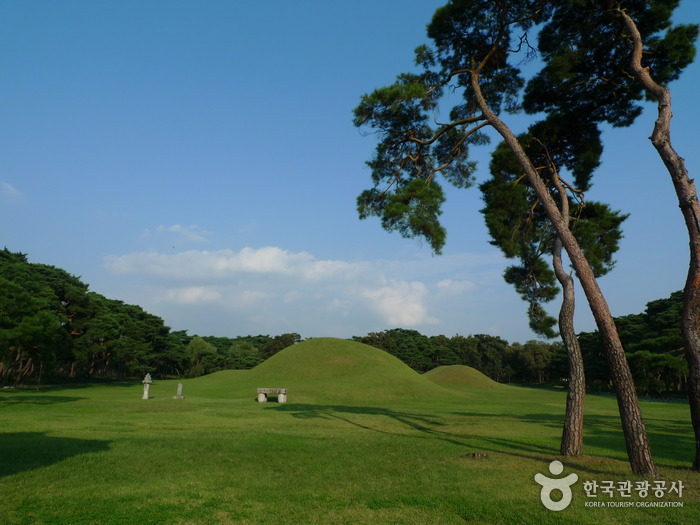
![Gyeongjuhanok 1st [Korea Quality] / 경주 한옥 1번가 [한국관광 품질인증]](http://tong.visitkorea.or.kr/cms/resource/10/2530210_image2_1.jpg)
![Wadamjung [Korea Quality] / 와담정 [한국관광 품질인증]](http://tong.visitkorea.or.kr/cms/resource/35/2557635_image2_1.jpg)
![Gyeongju Oreung Hanok [Korea Quality] / 경주오릉한옥 [한국관광 품질인증/Korea Quality]](http://tong.visitkorea.or.kr/cms/resource/35/2706135_image2_1.jpg)
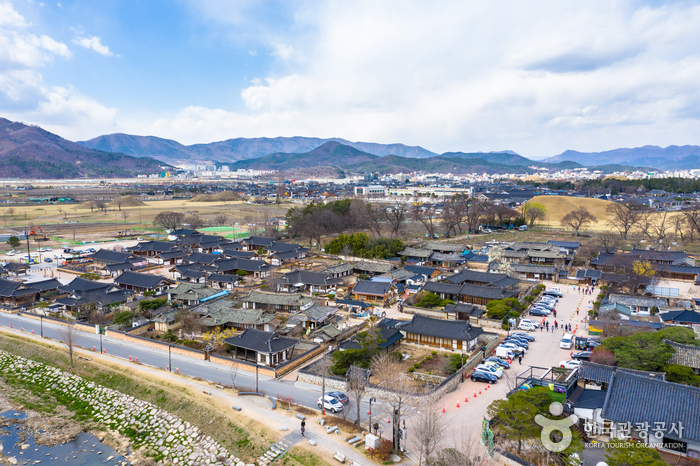
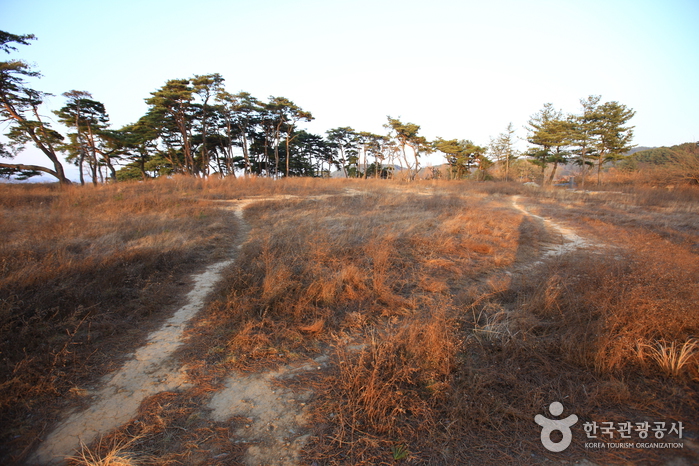
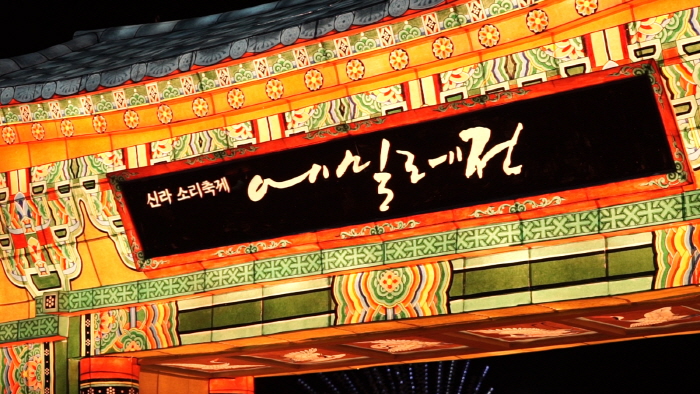

 Français
Français
 한국어
한국어 English
English 日本語
日本語 中文(简体)
中文(简体) Deutsch
Deutsch Español
Español Русский
Русский